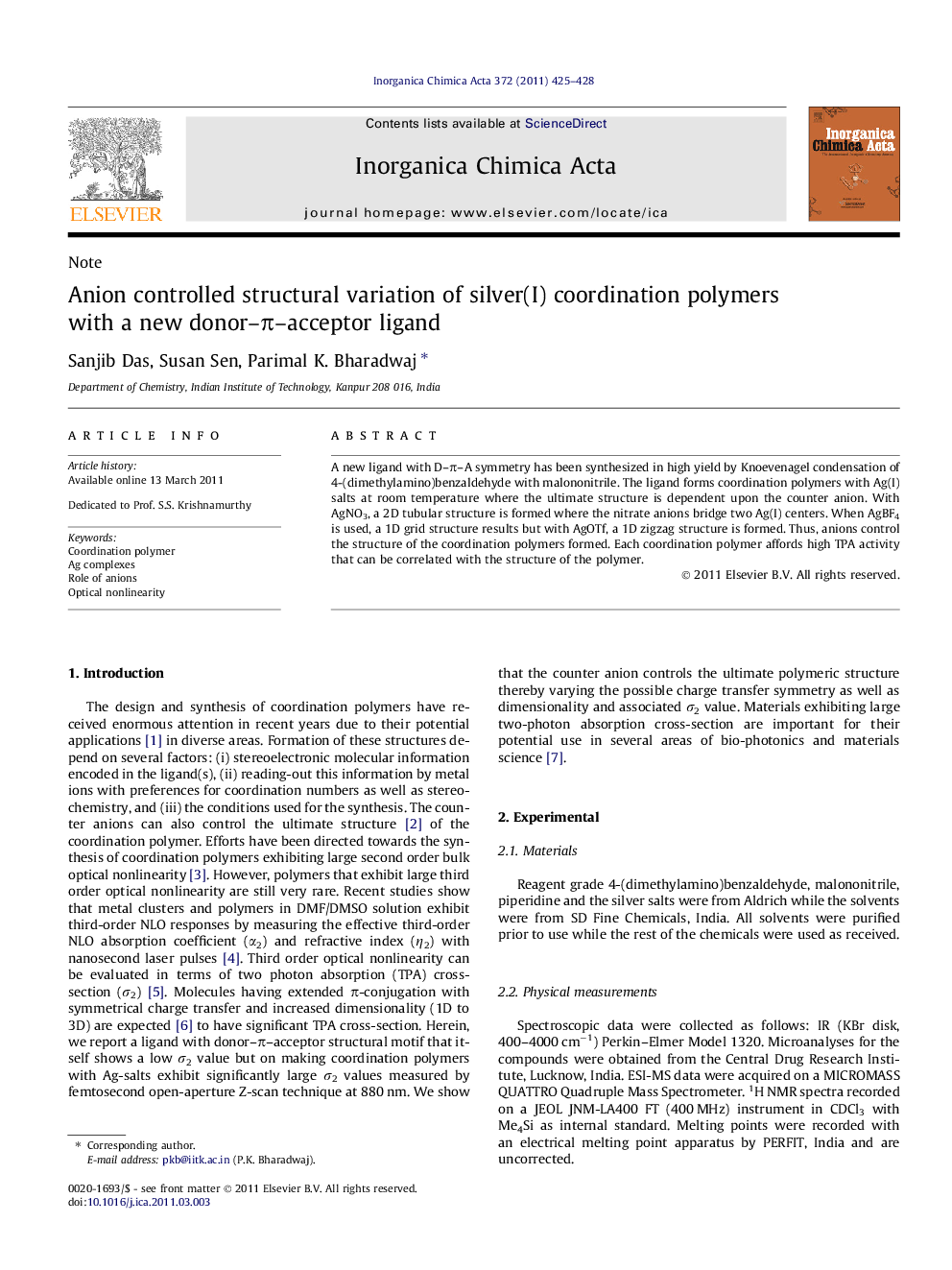| Article ID | Journal | Published Year | Pages | File Type |
|---|---|---|---|---|
| 1308924 | Inorganica Chimica Acta | 2011 | 4 Pages |
A new ligand with D–π–A symmetry has been synthesized in high yield by Knoevenagel condensation of 4-(dimethylamino)benzaldehyde with malononitrile. The ligand forms coordination polymers with Ag(I) salts at room temperature where the ultimate structure is dependent upon the counter anion. With AgNO3, a 2D tubular structure is formed where the nitrate anions bridge two Ag(I) centers. When AgBF4 is used, a 1D grid structure results but with AgOTf, a 1D zigzag structure is formed. Thus, anions control the structure of the coordination polymers formed. Each coordination polymer affords high TPA activity that can be correlated with the structure of the polymer.
Graphical abstractAg(I) forms coordination polymers with a D–π–A ligand where the counter anion determines the overall structure of the coordination polymers formed. Each of the coordination polymers exhibits high two-photon absorption cross-section.Figure optionsDownload full-size imageDownload as PowerPoint slideHighlights► A new ligand with D-π-A symmetry has been synthesized by Knoevenagel condensation. ► It forms different coordination polymers with Ag(I)salts of different anions. ► AgNO3 results a 2D tubular structure whereas AgBF4 results 1D grid structure. ► But with AgOTf, a 1D Zigzag structure is formed. ► TPA activity of each coordination polymer can be correlated with the structure.
